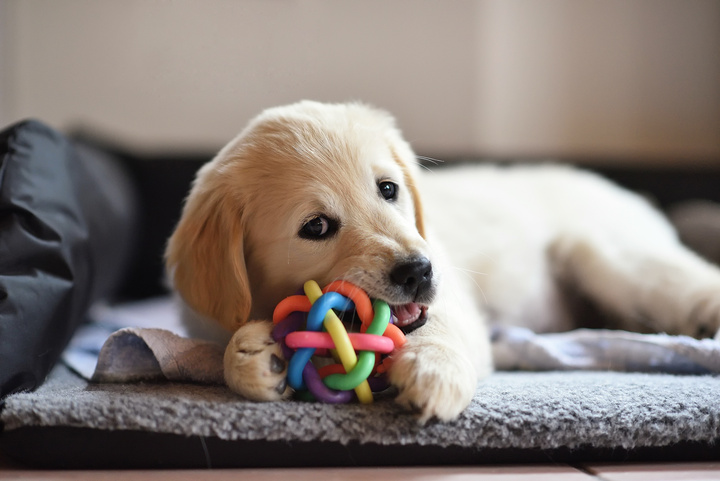You’ve got the food, the bed, the toys, the treats, the leash, and now… the puppy has arrived. It is a joyous occasion filled with excitement. There is often so much jubilation that new pet parents don’t think beyond bringing their new furry friend into the family. Yet, a great “what’s next” plan will safeguard new puppy parents from chaos and help their canine companion become a loyal and obedient family member.
Here are some essential things to consider when formulating your puppy plan.
Establish a routine
Although the routine changes a bit as your pup matures, it is essential to have a routine in place as soon as you bring your new puppy home. Dogs thrive on consistency, and it helps them feel safe. Establish an eating, sleeping, potty, and playtime routine, so your pup knows what to expect daily.
Pick a potty place and stick to it
Choose an area outside where you want your pup to use the potty. Once he relieves himself, praise him and return to the same spot each time you take your new pup outside. Remember to offer positive reinforcement each time your puppy does his business in the right spot.
Familiarize your pup with its environment
Don’t overwhelm your pup with the entire house at once – this can cause sensory overload. An indoor puppy pen is the best way to contain your pup and prevent this sensory overload. Once a day, take your dog out of the playpen to explore a designated space and then return your furry friend to his playpen area. Be sure to skip any rooms you wish to be off-limits to your pup.
Introduce new people slowly at first
Although bringing a new puppy home is exciting, and you may be ready to show your latest addition off, resisting the temptation to introduce too many people at once is also important. A better option is to introduce one person at a time. Allow your pup lots of time to explore and interact with one person before introducing anyone else.
Introduce other pets slowly
If you are already a pet parent, it is crucial to think about how your other pets at home will react to the new family member and have an introduction plan in place. Before introducing your pup to existing pets, do the following.
- For a week or so, let existing pets greet and smell the new furry family member through a gate or doggy playpen. Observe how your existing pet and puppy are acting.
- Once you are ready for a contact meeting, remove any toys or food dishes that belong to your existing pet.
- Choose a neutral location for the meeting that isn’t your existing pet’s favorite spot.
- Read the body language during the meeting and make it short and sweet. Each day, allow short supervised visits for pets to interact and begin to extend the time slowly if the meetings are going well.
Crate train… it’s good for you and your pup
A crate is a safe and secure spot for dogs. If trained properly, most pups love their crates. Place an appropriately sized crate within the confines of a doggy playpen and allow the door to remain open. Place a cozy blanket and some toys inside, and your pup will soon find it a nice, quiet place to relax. Once your puppy begins to lay in the crate with the door open, begin a playtime routine, followed by a small treat and some closed crate time for an hour or so. Repeat this routine daily, gradually extending the time in the crate by about 10 minutes each time until your pup takes his entire nap in the crate with the door closed.
Make daily exercise a priority
Daily exercise and playtime are essential for pups and young dogs. Schedule several play sessions daily and do your best to stick to a playtime routine. Your puppy will look forward to this interaction time, and it is important to create a safe and fun way for your pup to expend energy.
Basic training plan
Consider a basic puppy training plan before you bring your new friend home. Most trainers recommend starting puppy training at eight weeks old, with sessions lasting no more than 10 minutes per day. Many great resources are available on puppy training – the key is consistency and staying within your new pup.
Socialization
Although it is good to introduce new people and pets slowly at first – once your new pup has been part of the family for a few weeks, it is time to start exposing them to new people, places, and things. Puppy training classes are a great place to begin – not only will your furry friend meet new people and dogs, but he will also enjoy the car ride experience.
Avoid any big trips during the first several months
Planning to be around your pup for at least the first three months is a good idea to keep things consistent. Don’t take big trips where you will be gone for an extended period, as your pup identifies you with safety.
Don’t rush things
Like a young child, a new puppy requires patience, persistence, and stability. Keep these things in mind before you decide on a puppy and then after you bring your new friend home. The calmer the environment, the better your puppy will adapt.






